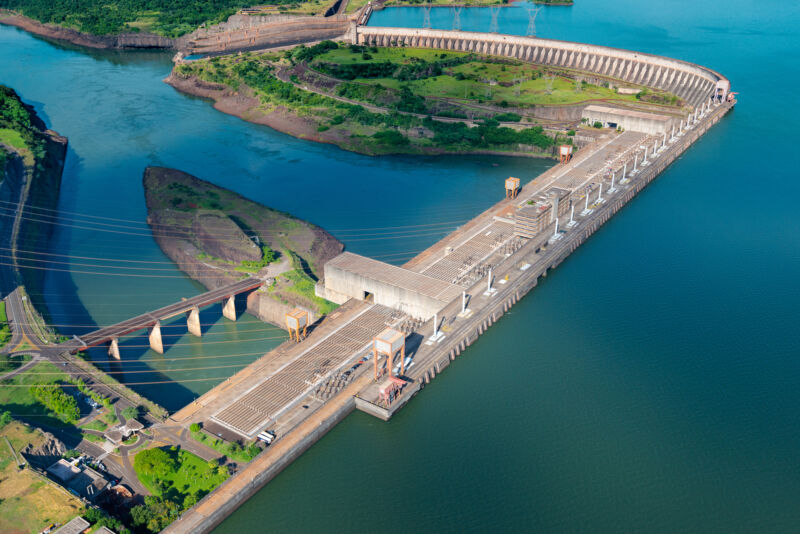
Slowly but surely, the world’s reservoirs are getting gunked up with sediment. In an unblocked river, the flowing water carries bits of sediment along—picked up from river banks or swept into the river from rain. However, rivers whose flow has been interrupted by a dam deposit some of that sediment right behind the dam itself, in the reservoir. “Gradually, [over] years and years, it will be accumulating,” Duminda Perera, a researcher with the United Nations University Institute for Water, Environment, and Health in Hamilton, Ontario, told Ars.
According to Perera, the increased sedimentation in these reservoirs, and the resulting loss of volume, are rarely considered. However, he and some of his fellow researchers recently penned a new study, suggesting that nearly 50,000 large dams—defined as being 15 m tall or more or above 5 meters high and blocking more than 3 million cubic meters of water—are being robbed of their capacity.
This slowly accumulating sediment takes up volume in the reservoir, occupying cubic meters that would otherwise be filled with water that would ultimately flow through hydroelectric turbines or be diverted to agriculture. “If you fill a cup with water, and then you put soil… the water volume is reduced,” he said.
Take the L
To identify the scale of the problem, the team applied previously established storage-loss rates to large dams across 150 countries, gathered from a database by the International Commission on Large Dams (the data set contains information on around 59,000 dams). For their calculations, the team also looked at the dams’ initial storage capacities and the years they became operational—this data was only available for 47,403 dams.
Using these parameters, the team estimates that trapped sediment is robbing these large dams of between 13 and 19 percent of their reservoir’s original storage capacity. That total could reach between 23 and 28 percent by 2050, according to the paper. This drop would take the capacity of these reservoirs from 6.3 trillion to 4.7 trillion cubic meters—equivalent to the combined total annual water use of Canada, China, France, India, and Indonesia, according to the report.
The storage loss will differ based on country. And land-use changes, like deforestation (which is often linked with erosion), can increase the amount of material entering the rivers. The United Kingdom, Panama, and Japan, among others, will lose between 35 and 50 percent of their storage capacity by 2050. By contrast, Cambodia, Ethiopia, and Bhutan are expected to lose less than 15 percent.
No “hard and fast” fix
This loss of storage can negatively impact humans in several ways. For dams that also have a hydroelectric generator, the sediment can act as an abrasive, damaging turbines and other parts of the facility, “decreasing their efficiency and increasing maintenance costs,” the paper noted. The thoroughly sedimented reservoirs also have less space to store flood water and hold less water to divert to agriculture. “Sometimes, our intended functions can’t be done because of the lack of storage,” Perera said.
A few things can be done to deal with this issue. One option is dredging, which uses machinery such as excavators or suction systems to remove the silt. Another option is flushing, or letting the sediment flow through the dam. However, the paper notes that dredging is costly and usually only a temporary solution, while flushing can result in unexpected consequences as a deluge of soil and other materials flow downstream. Further, some types of flushing, like “empty flushing,” involve emptying the entire reservoir, temporarily cutting off a hydroelectric dam’s ability to generate power.
Another, and in Perera’s mind better, option is bypassing, or diverting sediment steadily to below the dam using tunnels. However, all of these options are likely case-specific, he said. “There is no hard and fast rule to say ‘this is the only way to … avoid sedimentation,’” he said.
MDPI, 2023. DOI: doi.org/10.3390/su15010219






